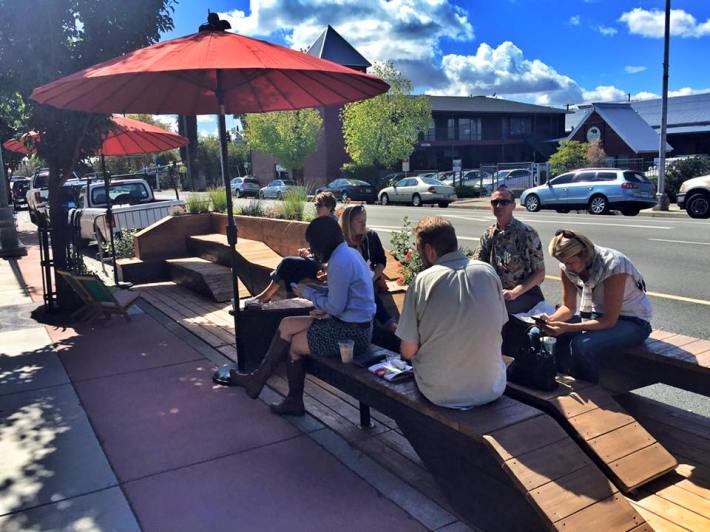In 2015, Shasta Living Streets worked on a project that, on the face of it, was no different from many other local advocacy efforts in California. But its success is leading to new standards that the entire state will benefit from.
The year before, Anne Thomas, director of the sustainable streets advocacy group, had worked with Caltrans to redesign street space on the state highway that cuts through Redding's downtown. The one-way, three-lane car thoroughfare was converted to a two-lane road with plenty of space for a bike lane.
Then last May Shasta Living Streets organized an open streets event that was a huge success. Streets Alive! brought people downtown to walk, bike, and play along the new road-dieted section of the highway. It showed them what could be possible, and when the idea for building a parklet there was floated, it found a lot of local support.

But a parklet had never been placed on a state highway, and it would need permission from Caltrans. Many people would have given up at that point, because Caltrans is—or has been—notorious for not approving anything outside of its accustomed engineering standards.
But Thomas did not give up. And the local Caltrans district helped her figure out what needed to be done to create a pilot parklet. With plenty of space between the curb and the new bike lane—a result of that road diet—Shasta Living Streets was able to test the idea of whether parklets rightly belong on a state highway.
The parklet was extremely popular. Nobody got hurt and local businesses really liked the attention it brought to downtown Redding.
And now Caltrans is working on statewide standards for parklets, so that one day other cities will benefit from the small project that this scrappy advocacy group pulled off.
Congratulations, Shasta Living Streets, and thanks for opening the door for the rest of the state!






